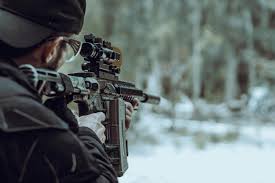Firearm safety begins at the cartridge level when determining what primers to use. A primer is a small ignition device installed inside the cartridge base to activate the powder charge through the impact of the firing pin. Selecting properly matched large rifle primers and having basic knowledge of their function can establish safety foundations for shooting. Here are ways primers can improve shooting safety:
Select the Right Primer
Building a firearm requires selecting the correct primer, directly impacting operational effectiveness and safe usage. Boxer primers have one central flash hole in their base, allowing simple removal and reuse. Choosing the right size primer maintains proper seating and reliable ignition. Putting small pistol primers into cartridges meant for large rifle primers may cause the ammunition to malfunction or perform erratically.
Different primers have different structural makeup and initiate ignition at different rates. Magnum primers generate high-temperature ignition, which benefits slow-burning powders in colder weather conditions. Match-grade primers work best with extreme ignition precision and have precise manufacturing tolerances. Competitive and long-range shooting applications utilize these primers since they enhance firing performance and maintain uniform results between successive shots. Your equipment specifications and manual will guide you in choosing the appropriate shooting primers.
How Proper Priming Can Enhance Safety
An adequately primed mixture allows for consistent, reliable ignition. The quality variance of primers and improper seating may cause ignition delays or weapon malfunctions. Reloaders can use precision-made primers that maintain batch consistency for safety, maintenance, and performance reliability. The selection of primers requires matching standard, magnum, and grade standards to the particular firearm load combination. Incompatible products may create unsafe pressure spikes or random cycling failures, making your firearm unable to fire. Tight-tolerance manufacturing within primer production helps reduce the risk of damaged primers, gas blowback, and bolt face damage occurrences. The safety of personnel performing the priming process depends on both appropriate tools and gentle tool manipulation methods.
Safety Practices Involving Primers
Primer reacts negatively to heat exposure and suffers from impacts and static electric discharges. Place primers in a protected location that stays dry and cool while safeguarding them from electronic devices. Using a specific storage cabinet built for reloading supplies creates an additional safety net. Use clean and dry hands or specialized tools when placing primers on the firearm. Placing primers directly on case bases will make it function normally, but deeply inserting them can cause misfires and slam fires. Regular cleaning sessions and damage assessments of large rifle primers will help you preserve their long-term quality. Primer inspection can happen before loading to check for corrosion, dents, or other irregularities. Any defects are signs of discarding or replacing the component immediately. Check loaded rounds to identify dangerous high or loose primers that might affect safety measures.
Purchase Quality Large Rifle Primers
Using high-quality primers combined with proper implementation practices enables better shooting quality and superior safety measures. Proper primer knowledge will help you choose quality products that enhance firing session safety. Reach out to a gunsmith now to buy the needed reloading materials.
- Understanding the Emotional and Physical Aspects of Sexual Health with a Sex Therapist
- Lemon Balm Weight Loss Recipe – A Natural Boost for Your Wellness Journey!
- Libra 12th House – Unveiling the Secrets of Subconscious Balance!
- 66 Degrees Celsius To Fahrenheit – Accurate Conversion & Practical Guide!
- 52.3 C To F – Convert Celsius to Fahrenheit with Ease!
